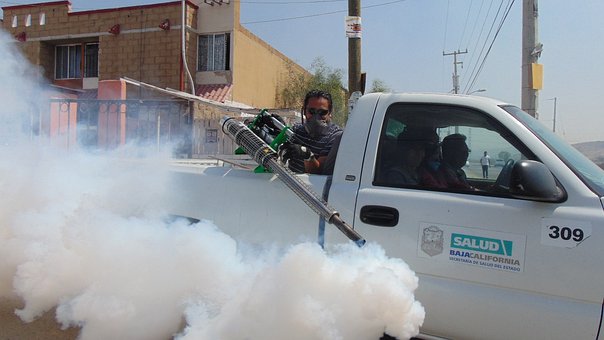A new study from The University of Toledo suggests early exposure to a common class of insecticides called pyrethroids may increase the risk of autism and other developmental disorders, even at levels currently recognized as safe by federal regulators.
The findings, which come from a study of mice, were published today in the peer-reviewed journal PNAS Nexus.
Pyrethroids are some of the most widely used insecticides in the country, appearing in both consumer products and industrial preparations.
“If you have someone who comes and sprays in your house, this is likely what they’re spraying. It’s used in landscaping, it’s what they fog in the streets for mosquitos. It’s everywhere,” said Dr. James Burkett, an assistant professor of neuroscience in the UToledo College of Medicine and Life Sciences and the paper’s corresponding author. “Our study, however, adds to the evidence that these chemicals might not be as safe for children and pregnant women as we once believed.”
Interest in a possible link between autism and pyrethroids has grown after several epidemiological studies documented higher rates of neurodevelopmental disorders in areas where the pesticides were used.
The new UToledo-led research sought to build on those population-based studies by analyzing the specific behavioral changes attributable to low-level exposure to pyrethroids.
Working with a team that included scientists from Columbia, Emory, and the University of Southern California, Burkett examined the offspring of female mice who were exposed to small doses of the pyrethroid insecticide deltamethrin before, during and immediately after pregnancy.
The researchers found those mice exhibited increased hyperactivity and repetitive behaviors, less vocalization, and were more likely to fail basic learning tests compared to controls.
The young mice also experienced disruptions in their dopamine system.
“These are all similar to symptoms human patients with neurodevelopmental disorders might have,” Burkett said. “We are not saying these mice have autism or that they have ADHD. That’s not the goal here. What we are saying is that something in their brain has been altered by this exposure and it’s resulting in the same kinds of behaviors that we see in children with autism.”
Dr. Gary Miller, vice dean for research strategy and innovation at Columbia University Mailman School of Public Health and a co-author on the study, said the research builds on prior efforts to identify other potentially harmful pest control chemicals.
“We have reduced our exposures to many classes of dangerous pesticides over the past few decades through restrictions and regulations.” Miller said. “This study adds to a growing body of literature that the widely used pyrethroids are not without adverse effects and should be further evaluated for their safety.”
The prevalence of autism in the United States has risen significantly over the past two decades, rising from one in 150 children in 2000 to one in 44 children in 2018, according to the Centers for Disease Control and Prevention.
Some of that increase is being driven by more awareness of autism spectrum disorder and better diagnostic processes. However, scientists still don’t know what causes most cases of autism.
“Research has traditionally focused on genetics, but it’s come to be appreciated there’s also a significant environmental element,” Burkett said. “Unfortunately, those factors are very poorly understood. That’s why this kind of research is so important. You can’t change someone’s genetics, but you can address environment factors.”
Pyrethroids are not the only class of pesticides that have been linked to autism, and scientists generally agree that development of the condition requires more than one single trigger.
“This research represents a piece of the puzzle. It is not definitive proof that the pesticide is unsafe or directly causing autism in humans,” Burkett said. “It may, however, suggest that the safe level of the pesticide needs to be revisited for pregnant women and children.”
If our reporting has informed or inspired you, please consider making a donation. Every contribution, no matter the size, empowers us to continue delivering accurate, engaging, and trustworthy science and medical news. Independent journalism requires time, effort, and resources—your support ensures we can keep uncovering the stories that matter most to you.
Join us in making knowledge accessible and impactful. Thank you for standing with us!

